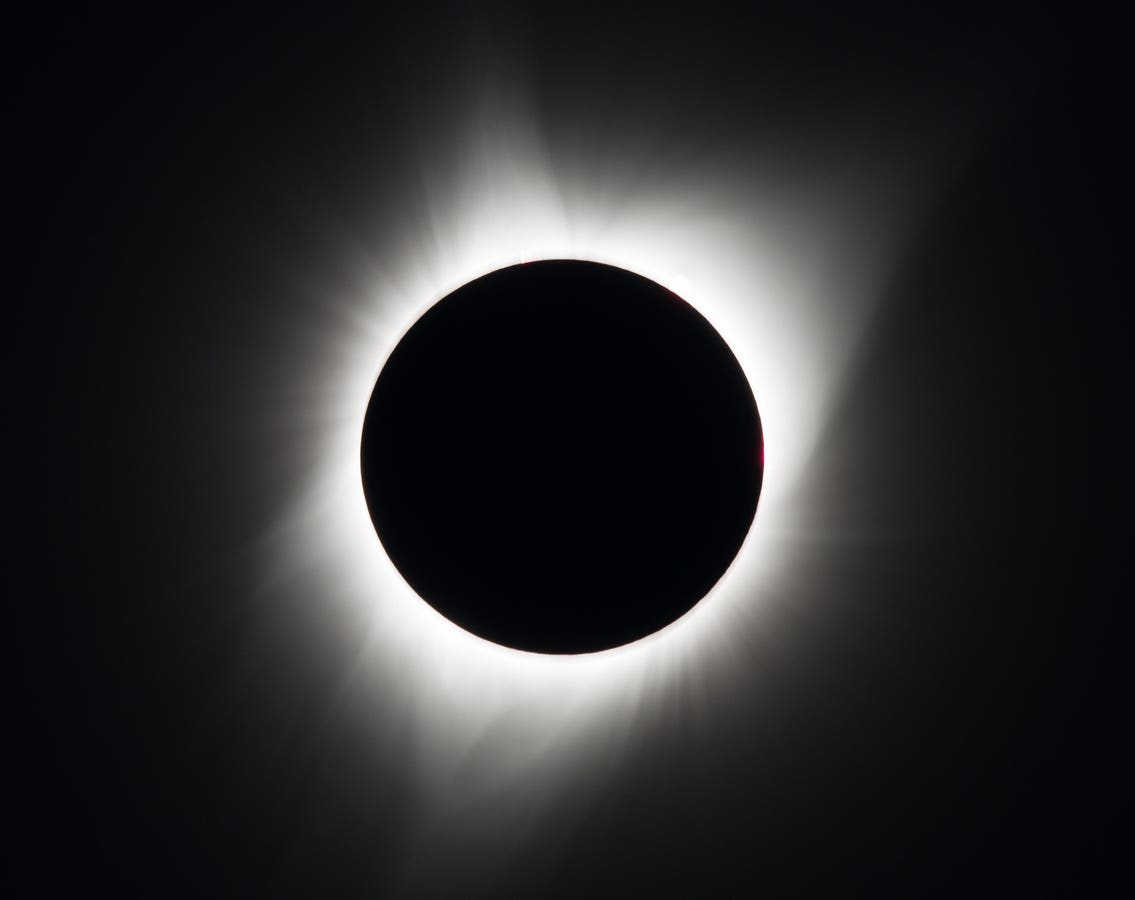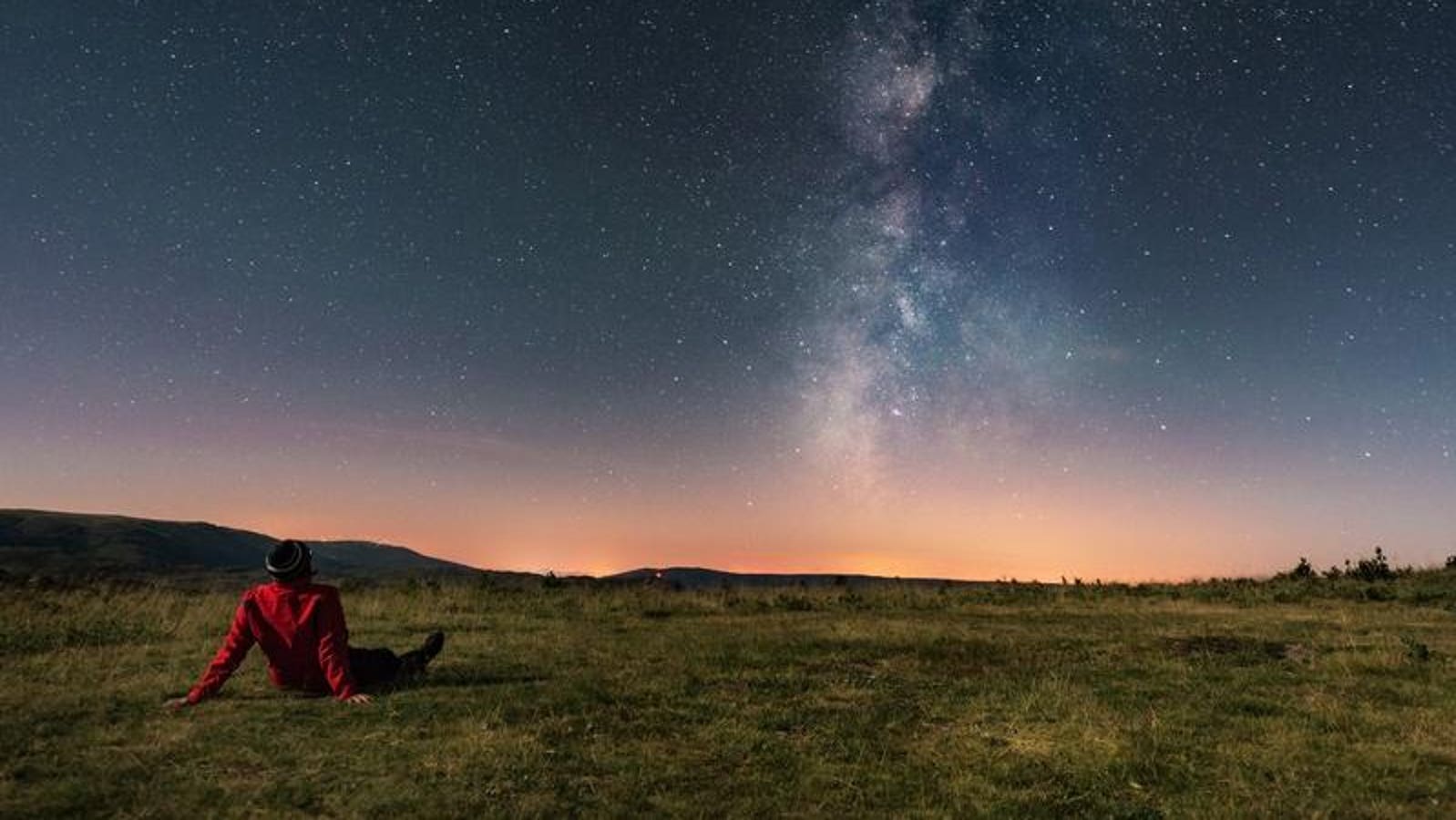A total solar eclipse is seen on Monday, August 21, 2017 above Madras, Oregon. A total solar eclipse … More
EXC:
Artificial solar eclipses in space could help scientists study the sun’s corona, improving space weather predictions with the UK-led MESOM mission.
KEYS:
MESOM, corona, space weather, solar storm, Mullard Space Lab, Surrey Space Centre, solar flares, coronal mass ejection
COPY:
A U.K.-led space mission will try to experience around 80 total solar eclipses in space, potentially offering scientists an unprecedented glimpse into the sun’s mysterious outer atmosphere.
The Moon-Enabled Sun Occultation Mission (MESOM), unveiled today at the Royal Astronomical Society’s National Astronomy Meeting 2025 in Durham, will synchronize its orbit to coincide with solar eclipses in space. If approved by ESA, MESOM would cost no more than $240 million and could be in orbit by 2026-28.
MESOM comes in the wake of the first images from Proba-3, a European Space Agency mission to do something very similar — though that will only last for two years.
https://www.forbes.com/sites/jamiecartereurope/2025/06/18/in-photos-first-ever-fake-total-solar-eclipse-created-in-space/
Solar Corona
Clearer, longer views of the sun’s elusive inner corona — the source of powerful solar flares and storms — are essential if solar physicists are to better understand space weather. Only during a total solar eclipse can the corona be glimpsed from Earth’s surface, and even then, only for a few minutes from any one location.
Unlike Earth-based total solar eclipses, MESOM aims to align a mini-satellite with the moon’s central umbral shadow once every lunar month — 29.6 days. MESOM’s unique orbit will repeatedly pass through the apex of the moon’s umbral cone, the darkest portion of its shadow, generating near-monthly eclipses.
48-Minute totality
These in-space eclipses could last up to 48 minutes, far longer than anything experienced from the ground on Earth. “MESOM capitalizes on the chaotic dynamics of the Sun-Earth-Moon system to reproduce total solar eclipse conditions in space while using the moon as a natural occulter,” said co-investigator Dr Nicola Baresi, from the Surrey Space Centre. An occulter is something that blocks light from a celestial object. MESOM will have the following instruments on board:
Telescope (US Naval Research Lab): imaging the corona.
Spectrometer (Aberystwyth & UCL): studying coronal plasma.
Spectropolarimeter (Spain): analyzing magnetic fields, sunspots and solar and flares.
Getting Closer To The Corona
MESOM is a slight upgrade on ESA’s current Proba-3 mission. That mission sees two spacecraft align so one can occult the sun and project a shadow onto the other — no moon required. As well as moving into the always-there shadow of the moon, MESOM aims to peer in from just 1.02 solar radii — 35,000 miles (56,000 kilometers) closer than Proba-3.
The Proba-3 satellites follow a highly elliptical 19.6-hour orbit ranging from 373 miles (600 km) at perigee to 37,000 miles (60,000 km) at apogee, flying in precision formation only near apogee. At apogee, they’re as far away from Earth’s gravitational force and atmospheric drag, enabling them to fly in formation autonomously, achieving eclipse-like conditions for six hours.
The ‘Concorde Eclipse’
Although MESOM’s 48-minute totality would be impressive, it’s less than experienced by Concorde on June 30, 1973, when an experimental Concorde aircraft extended totality from 7 minutes and 4 seconds on the ground to 74 minutes in the air, by flying almost as fast as the moon’s shadow. It took off from Las Palmas, Gran Canaria, in the Spanish Canary Islands, and flew at 1,350 mph (2,200 km/h) as the moon’s shadow raced across it at 1,500 mph (2,400 km/h). Concorde was able to extend totality from 7 minutes to 4 seconds on the ground.
https://www.forbes.com/sites/jamiecartereurope/2024/03/03/meet-the-longest-total-solar-eclipse-left-this-century-and-its-guaranteed-a-clear-sky/
The Longest Total Solar Eclipse From Earth
Mathematically, the longest total solar eclipse could last 7 minutes 31 seconds, according to Jean Meeus. The longest total solar eclipse known to have occurred was 7 minutes, 28 seconds on June 15, 743 BC, in the Indian Ocean. However, it’s been calculated that the longest so far — 7 minutes, 29 seconds — will occur in the Atlantic Ocean on July 16, 2186.
The longest total solar eclipse left this century, with a totality duration of 6 minutes and 23 seconds, will occur on Aug. 2, 2027, close to Luxor, Egypt. Ancient Egypt’s capital of Thebes, Luxor, is home to the Valley of the Kings and Queens, Karnak, and several other temples.
Wishing you clear skies and wide eyes.
The same total solar eclipse with the fields of view of the MESOM instruments superimposed on top of … More









